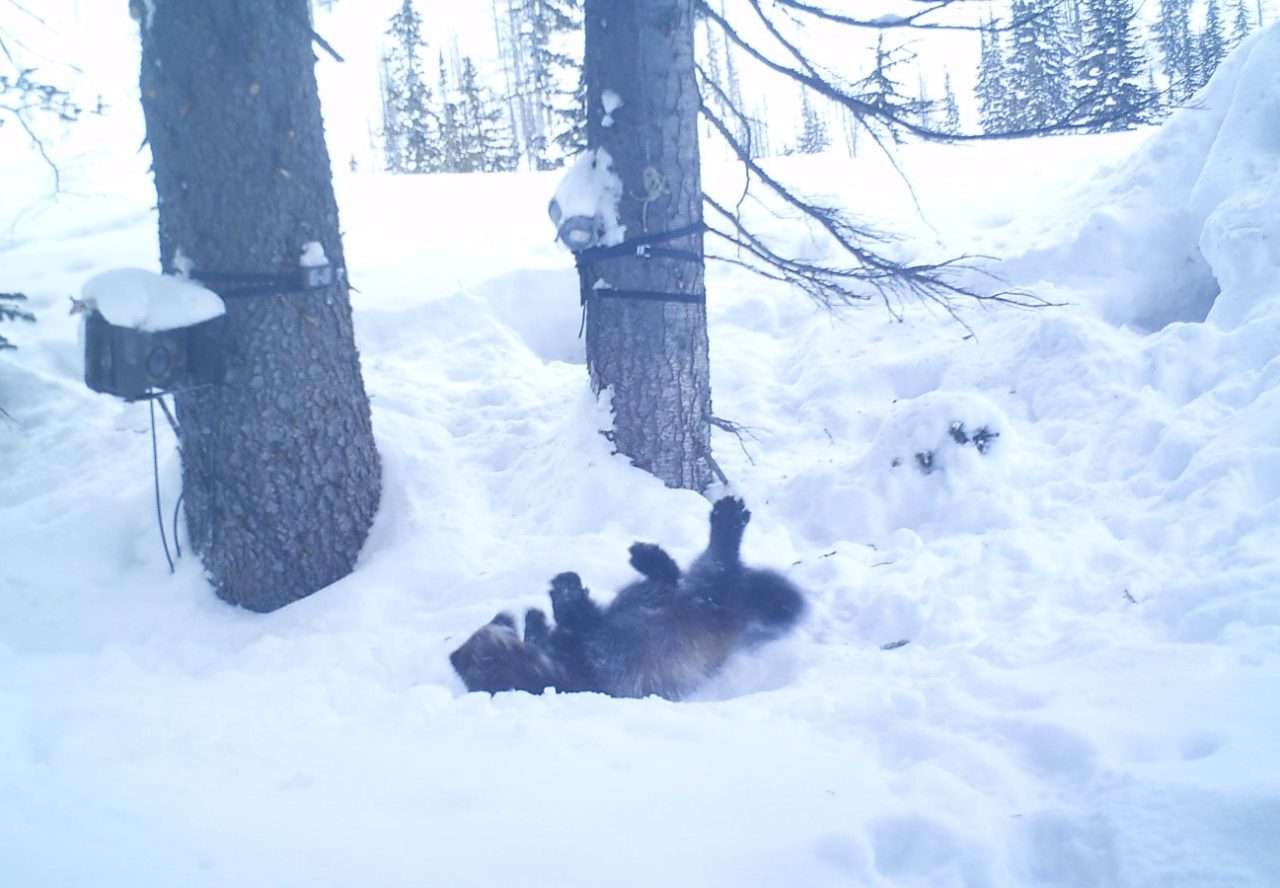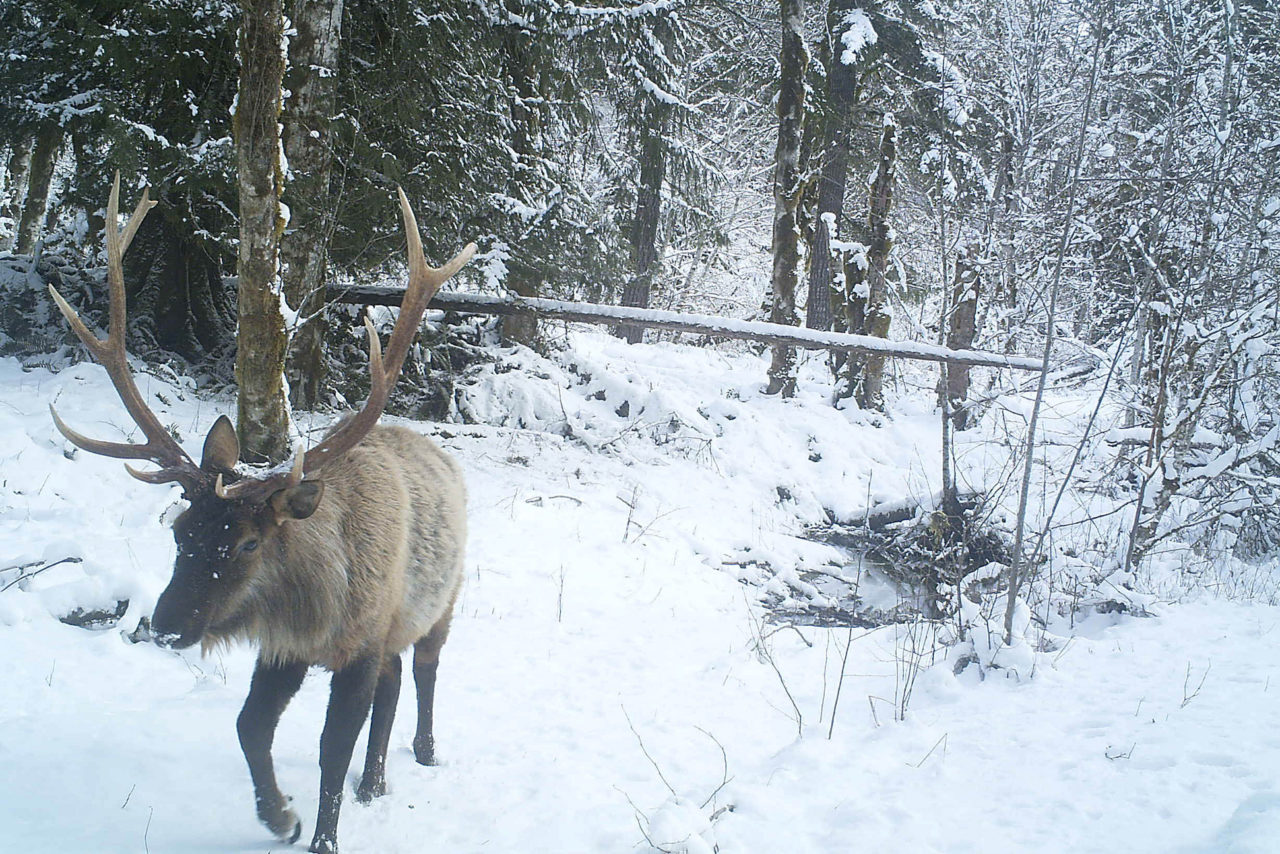Our favorite wildlife monitoring photos from 2018
Conservation Northwest / Jan 02, 2019 / Wildlife Monitoring
From elusive wolverines to fishers and cougars, we compiled some of our favorite photos from the past year of the Citizen Wildlife Monitoring Project.
By Laurel Baum, Citizen Wildlife Monitoring Project Coordinator
Often times, humans and wildlife seem so separate from one another. Our concepts of life are completely different—for wildlife, it’s survival and reproduction. For humans, well, things get a bit more complicated. Yet, flipping through photos documented by our Citizen Wildlife Monitoring Project (CWMP) over the past year, many Pacific Northwest animals become…relatable.
From a black bear’s playful leap, to a coyote gleefully playing or a wolverine’s exuberant rolling in the snow, each animal carries its own charisma.

These monitoring cameras give us a unique glimpse into the lives of local wildlife. They also provide important information for wildlife conservation and scientific research.
Powered by more than 100 volunteers, our Citizen Wildlife Monitoring Project is in its 13th year and is one of the largest citizen-science wildlife monitoring efforts of it’s kind in North America. Working in conjunction with state and federal agencies and our partners at the Wilderness Awareness School, spotting specific species helps to identify strategic locations to focus our efforts to protect, connect and restore wildlands and wildlife.
The data we collect contributes to the work of agencies, biologists and other wildlife managers and researchers. For example, wolverines are incredibly rare species, making them hard to study, but our wolverine sites are able to use unique chest markings and DNA from hair snags to inform researchers studying the species. Additionally, data from our remote cameras around Interstate 90 near Snoqualmie Pass has helped to determine the locations of new wildlife crossings, contributing to the successful construction of the new wildlife overpass on I-90!
In the North Cascades, we hope for photos of grizzly bears and newly-introduced fishers, and celebrate wolverine detections in new areas. In the South Cascades, we look for wolves, fishers and wolverines. We hope for a glimpse of Canada lynx, wolves, and grizzly bears in northeast Washington and southern British Columbia. And sometimes, we find them.

This year, our volunteers documented two elusive species, wolverines and fishers, along with more common species that are no less important to ecosystem health, including black bears, porcupines, pine martens, elk and bobcats.
Every year, we are able to conduct this important scientific research on rare and recovering wildlife through the help of our citizen-scientist volunteers. Their field knowledge, experience and presence on the ground provides invaluable feedback on site locations and core habitat conditions.
I hope these photos fill you with wonder and appreciation for the wild. Thank you to all the supporters and volunteers who’ve made the Citizen Wildlife Monitoring Project possible!














